Key takeaways:
- Online art critiques provide diverse perspectives that can enhance creativity, emphasizing the value of constructive feedback focused on improvement.
- Choosing the right platform for critiques is crucial; consider audience, engagement, moderation, ease of use, and anonymity to ensure valuable feedback.
- Establishing guidelines for constructive feedback encourages specificity and kindness, fostering a supportive critique culture.
- Utilizing visual references during critiques clarifies suggestions and empowers artists with tangible ideas for improvement.
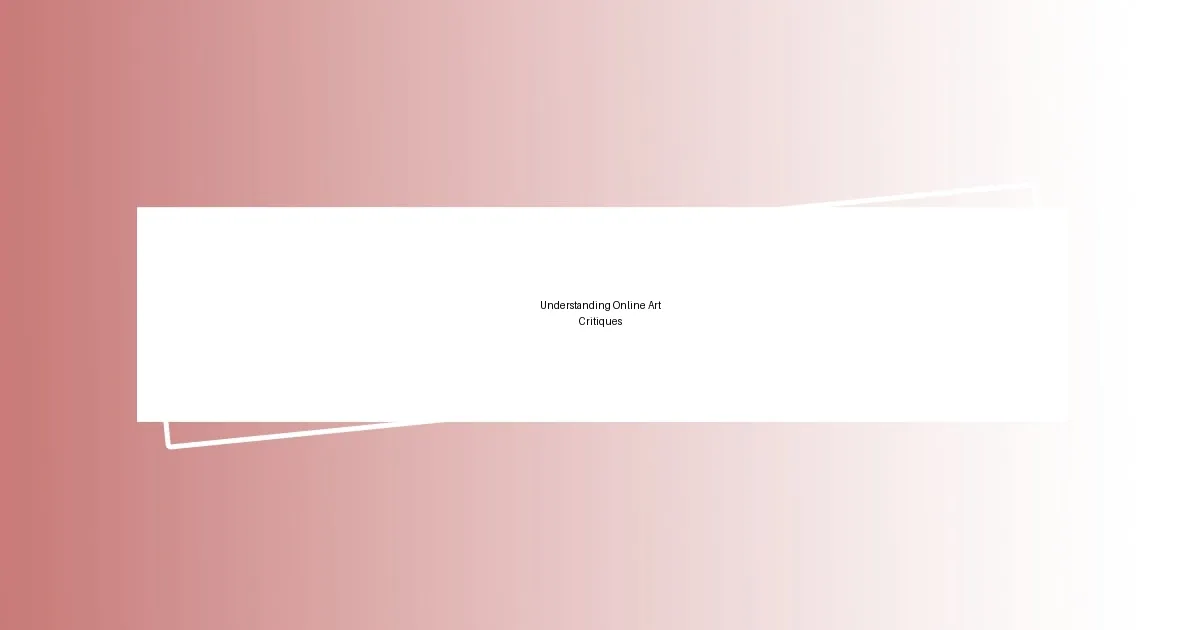
Understanding Online Art Critiques
Online art critiques can feel like a mixed bag—some feedback resonates while other comments can sting. I remember sharing one of my early pieces online, only to be floored by a sharp critique that highlighted flaws I hadn’t even considered. It taught me that while criticism can be tough, it’s often grounded in a desire to help us grow as artists.
What’s fascinating about online critiques is the sheer diversity of perspectives you encounter. Each viewer brings their own experiences and emotions to their interpretations, and I’ve learned not to take it all too personally. Have you ever found yourself pondering why someone sees your work in a completely different light? Exploring these varied interpretations can open up avenues for creativity that you never imagined.
Another key aspect to grasp is the importance of constructive feedback. I’ve found that critiques that focus on technique or intention rather than just preference tend to be the most helpful. It’s not just about “I like it” or “I don’t,” but rather, “How can you enhance this element?” This shift in focus not only deepens our understanding but also enriches the conversation surrounding the artwork itself.
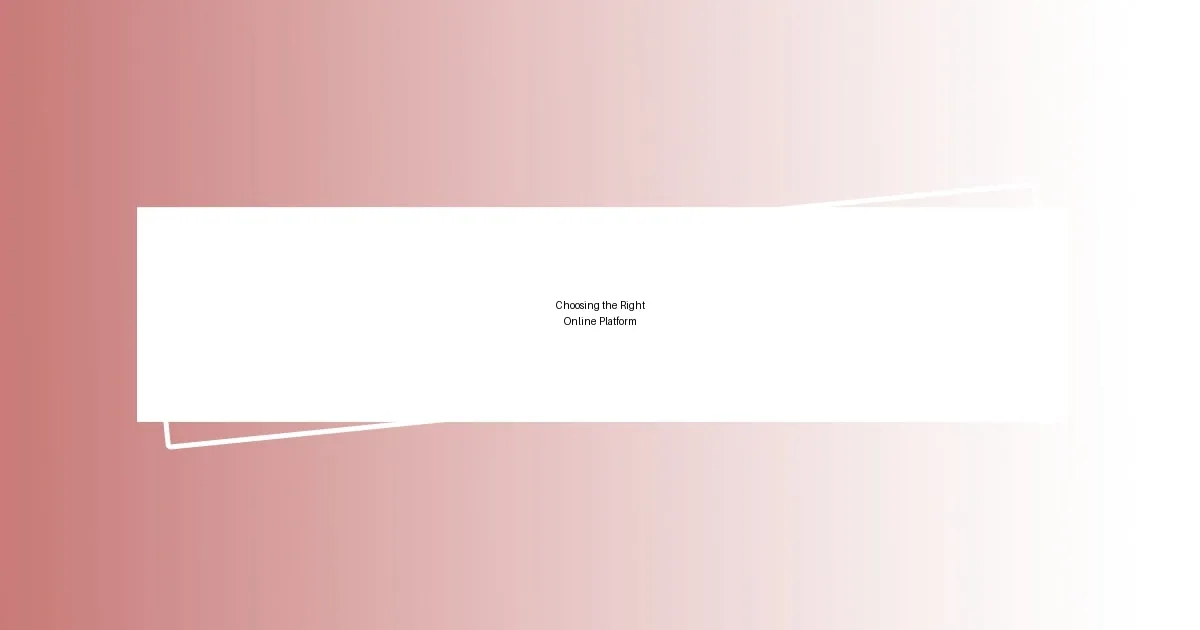
Choosing the Right Online Platform
Choosing the right online platform for art critiques can significantly shape your experience and the quality of feedback you receive. I’ve navigated various platforms, and I discovered that each has its own unique culture and audience. For instance, I posted a piece on a general art forum once and received feedback that was fairly generic. It wasn’t until I shared the same work in a niche community focused on my specific style that the critiques became truly insightful and relevant.
When evaluating platforms for art critiques, consider the following factors:
- Audience: Does the community focus on your art style or medium?
- Engagement: Are members active and willing to offer detailed critiques?
- Moderation: Is there a system in place to ensure constructive and respectful feedback?
- Ease of Use: Is the platform user-friendly and accessible?
- Anonymity: Do you prefer posting anonymously, or are you comfortable sharing your identity?
Reflecting on these aspects can help you find a space where you not only receive constructive criticism but also connect with fellow artists on a deeper level.
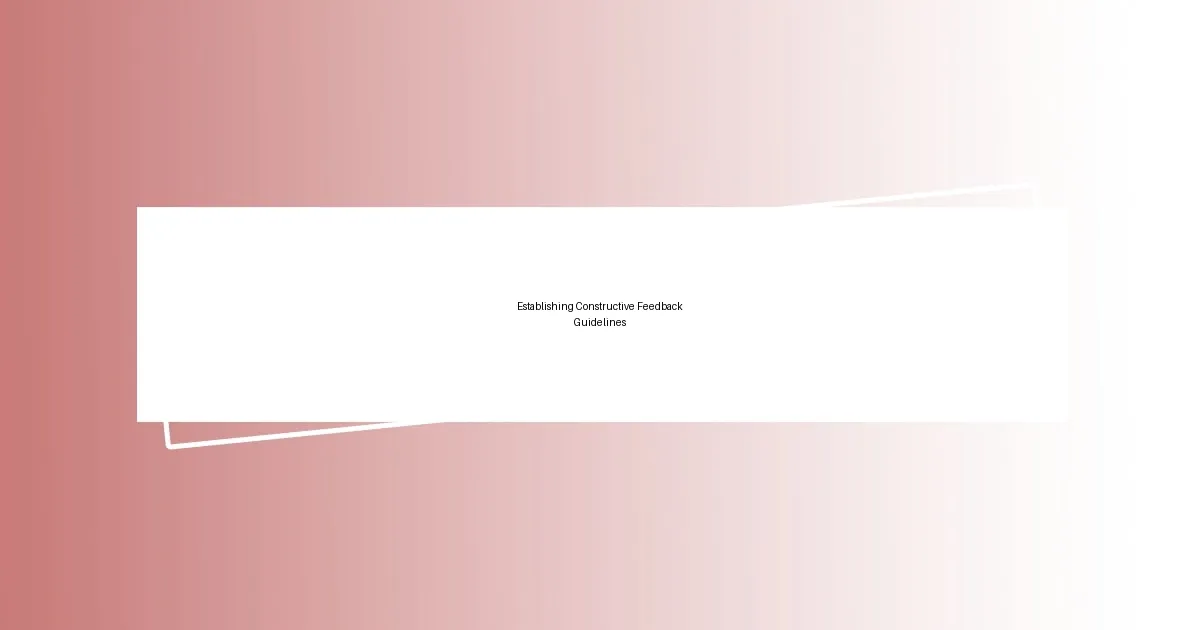
Establishing Constructive Feedback Guidelines
Establishing guidelines for constructive feedback is essential in fostering a supportive online art critique culture. One method I’ve adopted involves encouraging critiques that are specific and actionable. Instead of saying, “This part is off,” I urge people to explain why they feel that way and suggest ways for improvement. For example, I remember a critique I received where the reviewer pointed out that my color choices felt flat. They didn’t just stop there; they offered alternatives that really helped me think about color theory in a new light.
In my experience, it’s crucial to create a safe space for sharing critiques, so artists feel valued and understood. Establishing a guideline like “Express your thoughts with kindness” allows for more open exchanges. There was this one time when I shared a piece that I was genuinely proud of, only to have a comment that felt blunt and harsh. However, a friendly remark followed, providing a much-needed balance. This duality helped me appreciate diverse opinions while feeling validated.
Here’s a handy comparison of feedback approaches:
| Feedback Type | Characteristics |
|---|---|
| General Feedback | Broad, often vague comments that can lead to confusion. |
| Constructive Feedback | Specific, actionable suggestions aimed at improvement. |
| Emotional Feedback | Focuses on personal feelings about the artwork, may lack practical guidance. |
| Balanced Feedback | Combines constructive advice with emotional insight, fostering growth. |
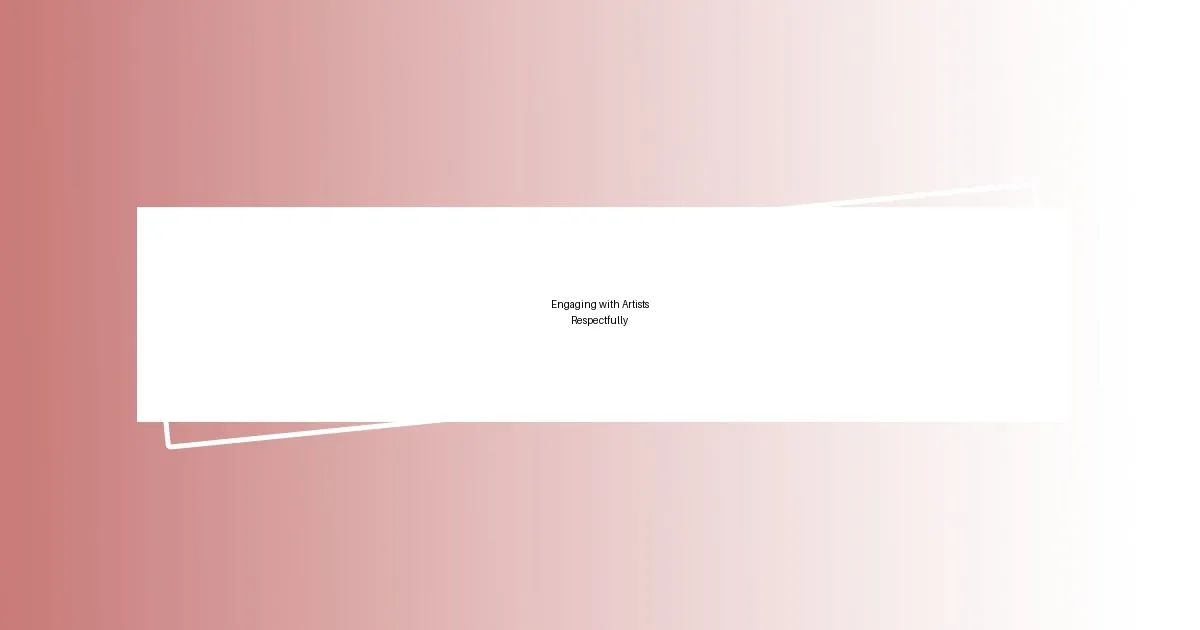
Engaging with Artists Respectfully
Engaging with artists respectfully is essential for cultivating a positive critique environment. I’ve realized that every comment holds power, influencing how someone views their work. When offering feedback, I often reflect on how I would feel receiving the same words. Asking myself questions like, “Would this inspire or discourage the artist?” helps me frame my critiques with empathy.
There was an instance when I shared a piece that was deeply personal to me. The feedback I received ranged from insightful to dismissive. One comment stood out because it acknowledged my emotions behind the piece while also encouraging me to explore deeper themes. This duality made me feel understood and pushed me to think critically about my work. It’s moments like these that remind me of the importance of kindness in our critiques.
I believe conversations around art should heighten the experience rather than diminish it. I often encourage fellow artists to highlight what resonates with them in addition to their critiques. After all, isn’t it wonderful to celebrate the strengths in someone’s work? When we engage positively, we create a nurturing space that not only enriches our artistic journey but also strengthens community bonds.
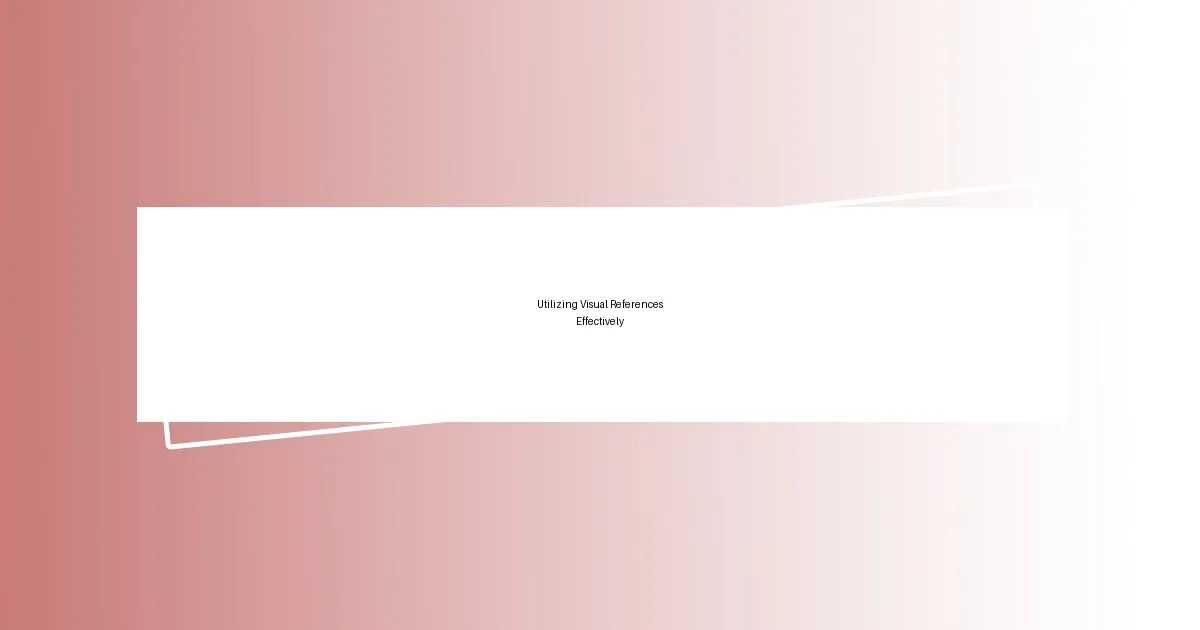
Utilizing Visual References Effectively
Utilizing visual references effectively is a game changer in art critiques. I often turn to visuals to express my thoughts more precisely. For instance, when critiquing a piece, I might pull up color palettes or composition examples that align with what I feel could enhance the artwork in question. This not only clarifies my perspective but also empowers the artist with tangible ideas.
In my own practice, I recall a time when an artist presented a landscape painting that felt somewhat disjointed. Instead of simply saying, “This doesn’t work,” I referenced a famous landscape by a master artist. I explained what made that piece successful—its color harmony and focal points. I could see the artist’s eyes light up; suddenly, they had a concrete example to examine and learn from. How rewarding is it to see someone have a lightbulb moment?
Visual references can also help bridge the gap between abstract concepts and tangible advice. Sometimes, when I feel stuck explaining an idea, I find an image that embodies what I mean. This practice has made my critiques not just informative but also visually engaging, and I encourage others to adopt this method. Have you ever tried this approach? It could transform how you connect with your fellow artists!
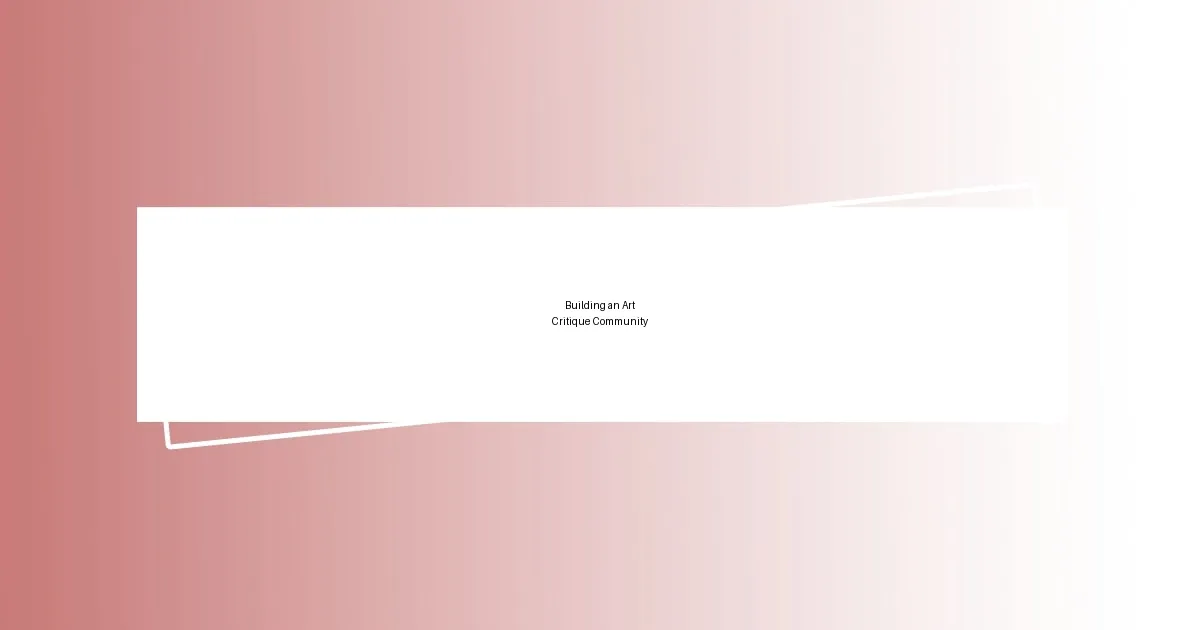
Building an Art Critique Community
Building an art critique community starts with creating a safe and inviting space for artists to share their work. I remember when I hosted an online critique session for budding artists; the initial nerves were palpable. To ease the tension, I encouraged everyone to share something they loved about their pieces before diving into the critiques. This approach not only strengthened our connections but also set a positive tone, reminding all participants that every piece of art carries value.
Another key aspect is fostering ongoing dialogues that extend beyond single critiques. In one of my groups, we established a regular schedule for feedback sessions, allowing us to watch each other’s progress over time. This consistency built trust, and instead of just offering critiques, we found ourselves sharing resources and techniques. How valuable is it to not only critique but also witness the evolution of an artist’s journey?
Lastly, embracing diversity in perspectives enhances our community. I once invited a guest artist from a different background to give their insights on our work. Their fresh viewpoint sparked lively discussions, and I found myself seeing my choices in new light. Bringing in various voices can enrich our critiques and broaden our understanding, making the exchange truly collaborative. Have you considered how different backgrounds could offer you new artistic insights? It’s a rewarding exploration worth undertaking!














